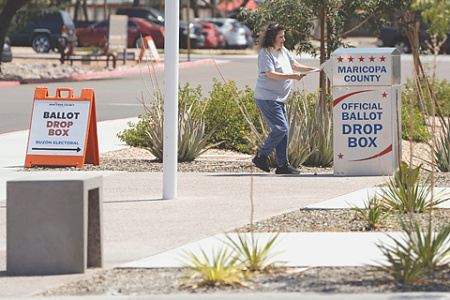
U.S. President Donald Trump has launched a new campaign to eliminate mail-in voting, framing it as a crucial step toward ensuring electoral integrity. This move signals a revival of his unsubstantiated claims of widespread fraud in the 2020 presidential election and is widely seen as a strategic maneuver aimed at bolstering Republican prospects in the pivotal 2026 midterm congressional elections.
In recent statements, including a post on his Truth Social platform, Trump has vowed to “lead the movement to get rid of mail-in ballots,” arguing that such systems are inherently fraudulent and susceptible to manipulation. He has repeatedly asserted, without evidence, that ballots can be forged or discarded and that the system allows non-citizens to vote. This rhetoric continues a narrative he has maintained since his first term, despite its rejection by American courts.
Following the 2020 election, dozens of legal challenges alleging widespread fraud were dismissed by courts across the country for lack of evidence. Ironically, mail-in ballots constituted nearly a third of all votes cast in the 2024 election, which saw Trump return to the presidency. Furthermore, the practice is not unique to the United States; over 30 countries, including established democracies like Canada, the United Kingdom, and Germany, offer mail-in voting options to their citizens.
Trump’s initiative faces a significant constitutional obstacle. While the president has suggested that states are merely “agents” of the federal government in election administration, the U.S. Constitution grants individual states the primary authority to regulate their own elections. Consequently, any presidential executive order seeking to impose a federal ban on mail-in voting would almost certainly be blocked by legal challenges.
Despite the legal hurdles, the political implications of Trump’s campaign are substantial. By continuously questioning the validity of mail-in ballots, he lays the groundwork to contest future election results, particularly if Republicans suffer losses. The strategy is also rooted in demographic and voting patterns. Analysts note that conservative, Republican voters tend to prefer voting in person on Election Day, viewing it as a civic duty. In contrast, mail-in voting is more frequently used by Democrats, independents, and less politically engaged citizens, making its elimination a potential tool for suppressing turnout among these groups.
This effort to alter voting methods is part of a broader partisan battle over electoral rules. In Texas, Republicans are pursuing a plan to redraw electoral district boundaries, a process known as gerrymandering, which could grant them additional seats in Congress. In response, Democrats in California are preparing their own redistricting proposal that could similarly benefit their party, setting the stage for an escalating political fight over the very mechanics of American democracy.
